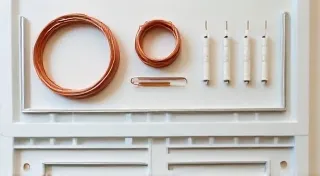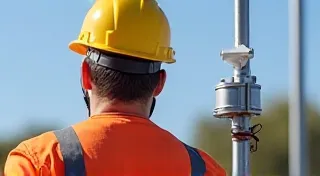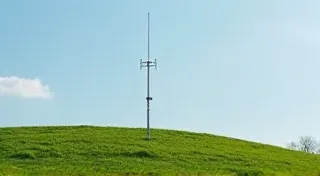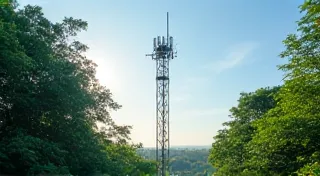Amateur Radio Antenna Building Projects: Your Comprehensive Guide to Radio Communication
Welcome to the ultimate resource for amateur radio enthusiasts eager to build their own antennas! Whether you're a seasoned veteran or just starting your journey into radio communication, this site is packed with step-by-step instructions, detailed plans, and expert advice to help you construct antennas that enhance your listening and transmitting capabilities. We believe that building your own antennas is not just about improving signal strength; it’s about understanding the underlying principles of amateur radio, fostering creativity, and connecting with a vibrant community of fellow radio hobbyists. This is more than just a collection of plans; it's a journey into the heart of radio science and engineering. Dive in and explore a wealth of radio projects designed to suit every skill level and ambition. This guide aims to not only provide practical instructions but also to educate you on the science behind antenna design, ensuring you'll become a confident and knowledgeable builder.
The world of antenna building can seem daunting at first. Understanding concepts like impedance matching, SWR (Standing Wave Ratio), radiation patterns, polarization, and feedline loss requires some fundamental knowledge. We’re here to break down these complex ideas in a clear and accessible way, ensuring you have the foundation needed to succeed. This isn't just about following a set of instructions; it's about understanding *why* you'll do what you're doing.
Before you even start cutting wire, it’s crucial to understand the importance of antenna safety. We'll guide you through potential hazards, best practices, and legal considerations – from dealing with heights and electrical currents to understanding local regulations. See our comprehensive guide to Antenna Safety: Avoiding Hazards During Construction and Operation for detailed information. Safety should *always* be your top priority.
Getting Started: The Fundamentals of Antenna Construction - Beyond the Basics
At its core, building an antenna is a blend of creativity, engineering, and a touch of art. We aim to provide a range of projects catering to diverse needs and preferences. From the simple elegance of a simple dipole antenna, perfect for beginners, to the complex precision of a Yagi-Uda antenna offering high-gain performance, there's something for everyone. Understanding the principles behind these designs will dramatically improve your ability to troubleshoot problems and adapt plans for your specific needs.
Let'll begin with an overview of key concepts. Wavelength plays a critical role – the physical size of your antenna is intimately tied to the frequency you're trying to transmit or receive. Higher frequencies (like those used for VHF and UHF) require smaller antennas, while lower frequencies (like those used for HF) require much larger ones. The concept of resonance is equally vital; an antenna operates most efficiently when its length is a multiple of its wavelength. Impedance mismatch arises when the impedance of the antenna doesn’t match the impedance of the transmitter or receiver. This can lead to signal reflection and power loss. Understanding how to match impedance is paramount to achieving optimal performance.
Do you have mobile radio needs? Learn how to build a ground plane antenna for mobile radio, ensuring reliable communication on the go. Remember that a well-designed ground plane is crucial for this type of antenna, providing a stable reference point for signal propagation. A poorly designed ground plane can drastically reduce performance, turning what should be a reliable antenna into a source of frustration.
But first, consider the materials you’ll be using – a careful selection of antenna construction materials is key to longevity and efficiency. Copper, aluminum, and stainless steel are common choices, each offering different advantages in terms of conductivity, strength, and corrosion resistance. The choice of insulation is also critical, especially in environments with high humidity or exposure to UV radiation. Understanding the electrical properties of different materials will help you make informed decisions that lead to a more robust and long-lasting antenna.
And if you’re struggling to achieve optimal performance, an antenna analyzer is an invaluable tool for troubleshooting and optimization, allowing you to precisely measure and adjust antenna characteristics. It's like having a diagnostic lab in your toolbox. You can measure SWR, impedance, and resonance frequency, providing valuable insights into the antenna’s performance.
Delving into Antenna Types & Designs: A Spectrum of Possibilities
Let's explore some of the popular antenna designs we cover. Need a low-profile solution? The foxhole antenna offers a discreet and effective option. It’s perfect for situations where visibility needs to be minimized – think urban environments or areas with restrictive covenants.
Are you fascinated by mathematical elegance and signal propagation? Our article, "The Fractal Forest of Transmission: Antenna Geometry and the Aesthetics of Signal Propagation," will open your eyes to a different perspective. Fractals are complex geometric shapes that exhibit self-similarity at different scales, and they can be used to create antennas with unique and interesting properties.
For VHF/UHF enthusiasts, the J-Pole antenna offers a compact and efficient design. Its simple construction and relatively high gain make it a popular choice for local communication. Understanding the principles behind its design is key to optimizing its performance.
Looking to expand your range? Consider a loop antenna, ideal for local communication. Loop antennas can be surprisingly versatile, and their shape can be modified to suit different needs.
For those seeking exceptional performance, a quad antenna can significantly boost signal strength. These antennas can be complex to build, but the increased gain can be well worth the effort.
Sometimes, simplicity is the key. A longwire antenna offers a remarkably effective solution, even with its minimalist design. Its simplicity is deceptive; proper installation and tuning are critical to achieving optimal results. This antenna is susceptible to noise and requires careful placement to minimize interference.
Want to boost your signal and work mobile? Check out our plans for building a portable ham radio antenna for Field Day. These antennas need to be lightweight, durable, and easy to set up and take down.
For a compact, high-performance antenna, consider a Slim Jim antenna. This is a variation on the J-pole design that offers even greater efficiency and gain.
Connecting with the Community and Exploring the Spectrum - Beyond the Build
The world of amateur radio is more than just building antennas; it's about community, learning, and exploring the vastness of the electromagnetic spectrum. It’s a hobby that fosters creativity, problem-solving skills, and a deep appreciation for science and technology.
Our article, "From Static to Symphony: Recovering Lost Voices in the Radio Spectrum," delves into the history and science of radio communication, exploring how signals are transmitted and received across vast distances. Understanding the challenges and innovations in this field is key to appreciating the incredible achievements of radio engineers.
Finally, our piece on "Whispers Across the Aether: The Resonance of Amateur Radio and Human Connection" celebrates the unique culture and camaraderie of the amateur radio community. It's a place where people from all walks of life come together to share their passion for radio and to help each other learn and grow.
Essential Tools and Resources for the Antenna Builder
Beyond the plans and designs, having the right tools and resources is essential for success. This includes a good soldering iron, wire cutters, pliers, a multimeter, a SWR meter, and a reliable source of information. We recommend joining local amateur radio clubs and participating in workshops and training sessions.
Here's a brief checklist:
- Soldering Iron & Solder
- Wire Cutters
- Pliers
- Multimeter
- SWR Meter
- Antenna Analyzer (optional but highly recommended)
- Safety Glasses
- Gloves
Important Resources
- Antenna Safety: Avoiding Hazards During Construction and Operation
- Antenna Construction Materials Guide
- Antenna Analyzer Guide
- ARRL (American Radio Relay League): www.arrl.org
We hope this guide inspires you to build your own antennas and to explore the fascinating world of amateur radio. Remember to always prioritize safety and to have fun!




















